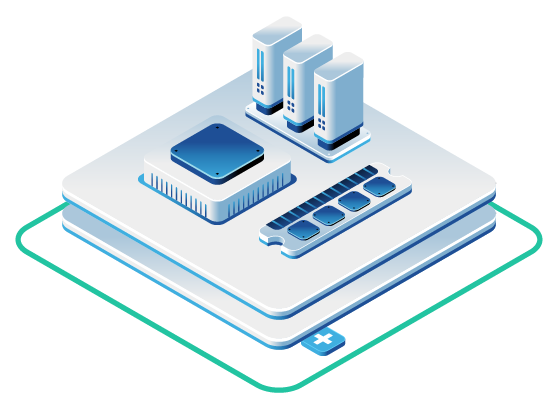CephFS (Ceph File System) handles large-scale file storage by keeping metadata separate from file data. This separation helps deliver quick, dependable, and scalable access. Here’s a quick rundown:
- Metadata Management: CephFS stores metadata like file locations, permissions, and directory structures in its own dedicated storage pools, apart from the actual file content.
- Metadata Server (MDS): The MDS is responsible for the file system’s namespace, caching frequently accessed metadata, and spreading the workload. You can run multiple MDS servers in an active-active setup, allowing CephFS to scale out and handle more requests efficiently.
- Data Integrity: CephFS uses journaling, atomic operations for updates, and metadata replication to keep metadata consistent and safe from loss.
- Private Cloud Integration: CephFS works well with platforms like OpenStack, offering flexible scaling and storage for private cloud setups.
CephFS’s way of handling metadata makes it a strong candidate for private clouds, high-performance computing (HPC), and demanding enterprise tasks. Its POSIX compliance means it works with many existing applications, and its caching and load distribution strategies help cut down on access times. Read on to see how these aspects contribute to its ability to scale and maintain reliability for today’s storage demands.
How CephFS Manages Metadata
CephFS handles metadata with a clear approach aimed at speed and reliability. By keeping metadata tasks separate from actual data storage, CephFS manages file system information effectively.
Metadata and Data Storage Separation
In CephFS, metadata isn’t stored alongside file data. Instead, it resides in its own dedicated pools within the Ceph storage cluster (these are known as RADOS pools). This separation means metadata work doesn’t directly interfere with data read/write speeds. This metadata pool holds key information such as:
- The file system’s directory layout (hierarchy).
- File details like permissions, ownership, and timestamps.
- Information about file sizes and where their data blocks are stored.
CephFS performs metadata updates as atomic operations. This means a change is either fully completed or not at all, preventing inconsistencies in the file system structure. These dedicated metadata pools are fundamental to how the Metadata Server (MDS) works.
Metadata Server (MDS) Functions
The Metadata Server (MDS) is the core component handling CephFS metadata. Its main jobs include:
- Namespace Management: Managing the file and directory hierarchy (e.g., filenames, paths).
- Cache Management: The MDS maintains an in-memory cache of frequently accessed metadata. Additionally, CephFS clients also cache metadata they are permitted to (via capabilities), further reducing the load on the MDS and speeding up access for users.
- Load Balancing: When multiple MDS daemons are active, they share the metadata workload, preventing any single server from becoming a bottleneck. Different parts of the file system namespace can be handled by different MDS ranks.
CephFS allows you to run several MDS daemons in an active-active configuration. This setup lets the metadata services scale horizontally, meaning you can add more MDS instances as your needs grow. Each active MDS maintains its own cache, which helps reduce delays for metadata operations and improves overall responsiveness.
Metadata Recording System
To protect metadata and ensure changes are correctly applied, CephFS uses a journaling system. This system reliably records metadata modifications:
- All changes to metadata are first written as entries in a log (the journal), which is itself stored in RADOS.
- This journaling helps make sure updates are atomic—they either complete fully or not at all. This is crucial for preventing metadata corruption if a server or MDS daemon crashes.
- The system periodically creates checkpoints, which are consistent snapshots of the metadata state, useful for speeding up recovery.
When a metadata change occurs, CephFS writes it to the journal before applying it to the main metadata pool. This ‘write-ahead logging’ is key for maintaining a consistent file system, particularly if the system needs to recover from an unexpected shutdown.
Main Metadata Features
CephFS includes several key metadata features that contribute to its performance and reliability in demanding environments.
Scaling and Load Distribution
CephFS is built to scale its metadata performance as your storage needs grow. It achieves this by distributing the metadata workload across multiple active MDS instances. This distribution prevents bottlenecks and helps maintain quick response times, even as the file system handles a very large number of files, directories, or services many clients simultaneously. This is particularly useful in large cloud deployments where thousands of metadata operations might occur concurrently.
POSIX Standards Support
CephFS provides POSIX-compliant file system semantics. This means it supports standard file system operations and features that applications (especially those on Linux/UNIX systems) expect, such as:
- Atomic operations for actions like file creation and renames.
- Extended attributes (xattrs).
- Standard UNIX-style permissions (owner, group, other).
- Hard links and symbolic links.
This POSIX compatibility is important because it allows many existing applications to use CephFS without modification, and system administrators can manage it using familiar tools and concepts.
Benefits of CephFS Metadata System
Speed and Efficiency
The design of CephFS’s metadata system directly contributes to its speed. Techniques like aggressive metadata caching (both on the MDS and on client nodes), along with load distribution across multiple MDS servers, significantly reduce the time it takes to access metadata. This results in quicker file operations (like ls, find, stat) and a more responsive file system experience for users and applications.
Data Protection Methods
CephFS ensures metadata is well-protected against loss:
- Replication: Metadata is stored in RADOS pools. These pools can be configured to replicate their contents across different servers, racks, or even data centers (failure domains). This means if a disk or server holding some metadata fails, other copies are still available.
- Journaling: As mentioned earlier, the journal ensures metadata changes are durable and can be replayed if an MDS fails before changes are fully committed to the backing pool.
- MDS Failover: Ceph clusters monitor active MDS daemons. If one fails, a standby MDS can quickly take over its duties, typically automatically, maintaining metadata availability with minimal interruption.
Common Use Cases
CephFS’s metadata architecture makes it a good fit for a number of demanding applications:
- Private Clouds: It provides scalable shared storage for virtual machines and cloud platforms like OpenStack and Apache CloudStack.
- High-Performance Computing (HPC): CephFS can serve as a large, parallel file system for scratch space or project directories in HPC clusters.
- Containerized Applications: It offers persistent storage for containers, especially when managed by orchestrators like Kubernetes (using the CephFS CSI driver).
- Media and Entertainment: Storing and accessing large media files for collaborative editing, rendering, or streaming workflows.
- Scientific Research: Managing large datasets for research computing where shared access is essential.
Its ability to scale both capacity and metadata performance independently is key in these scenarios.
Wrapping Up – CephFS Metadata Management
CephFS’s distinct method of managing metadata is fundamental to its success as a distributed file system. By separating metadata from data and using specialized servers (MDS) equipped with features like journaling, multi-level caching, and active-active configurations, CephFS can scale to handle vast capacities and extremely high numbers of files while protecting data integrity. This architecture provides the consistency and performance needed to reliably manage complex, large-scale file storage.
Read More on the OpenMetal Blog


































